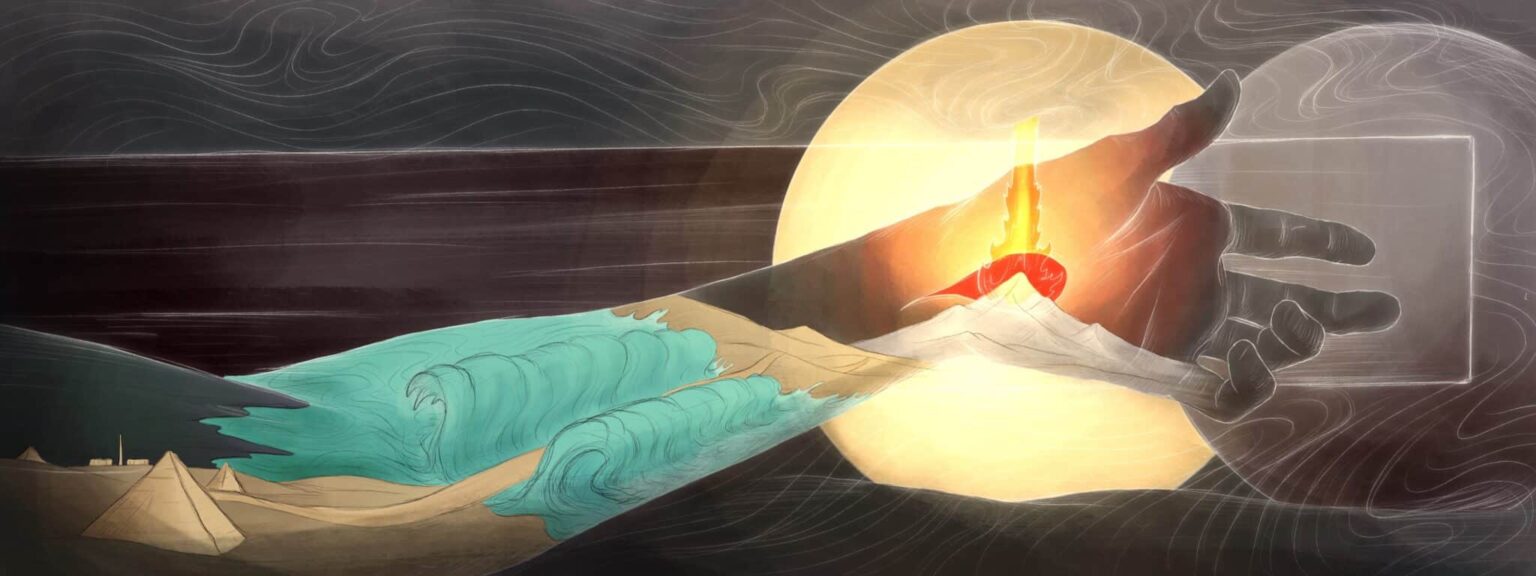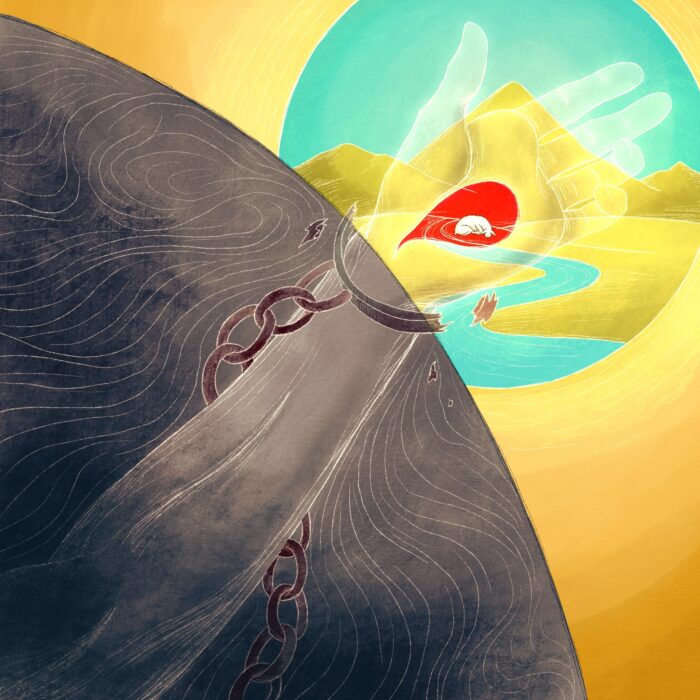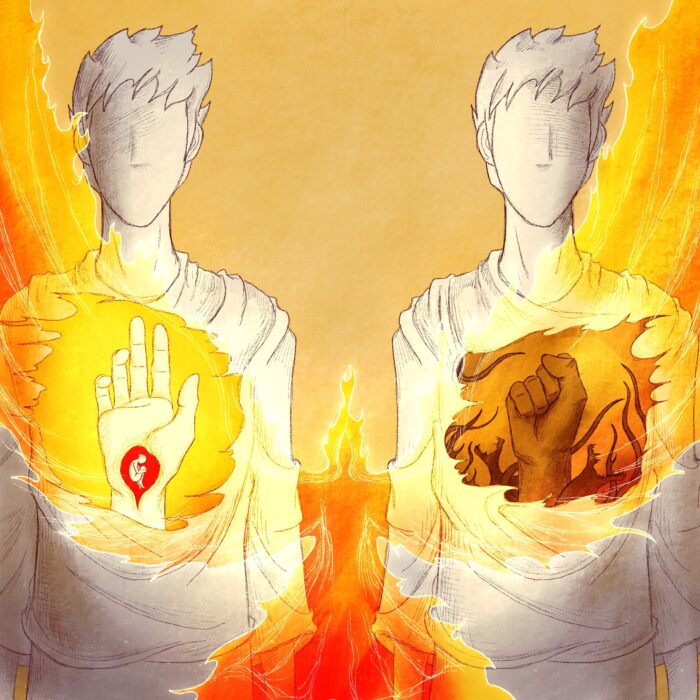
Deuteronomy 26:8, “And YHWH brought us out of Egypt with a mighty hand and an outstretched arm, with great deeds of terror…”
So, the idea for this morning’s picture actually comes from my reading of the baptism account in Matthew. I was freshly reminded of how Jesus embodies the exodus of Israel in Himself–passing through the metaphorical waters of judgment in His baptism and then being led into the wilderness where His devotion to the word of God is tested.
That, in turn, reminded me of the connection that Mark makes explicit between Christ’s baptism and His crucifixion (there are many parallels, you can take a look at this picture and description to see a few: https://www.facebook.com/fullofeyes/photos/a.440209082783915.1073741828.366187810186043/746143272190493/?type=3&theater ).
Luke also links Christ’s crucifixion to the concept of baptism (1 Cor. 10:2)…
As does–in a way–Paul (Rom. 6:3).
So–we have warrent to see the baptism of Jesus as an anticipation of His cross, AND as a symbolic echo of the Red Sea.
All of these seemingly disconnected concepts and allusions find their unity in the idea of the “New Exodus” that the Messiah has come to work for His people. This is the end-time redemptive work that YHWH anticipates in Jeremiah 16 and 23–the New Covenant. There God foretells a day when the Messiah will reign as King and will draw all people to Himself (an accomplishment that John tells us is achieved at the cross, John 11:51-52, 12:32). And this Messianic Exodus will be so great that it will supersede the old exodus from Egypt as God’s definitive work of self-revealing redemption (Jer.23:7-8).
The New Testament authors, of course, recognize the Messiah in the crucified and risen Jesus. He is the Righteous Branch, the True Redeemer of God’s people and True Revealer of God’s Name, and He performs this “Exodus” of His people out of the slavery of their sin through His death and resurrection.
The concept required–or at least, worked best–with a longer canvas than my regular verse pictures, that’s why this one looks a bit different than normal. Sinai is located in the mark of Christ’s hand because it is by the wounds of His love that He absorbs the wrath of–and declares Himself to be–the Holy One of Israel.




